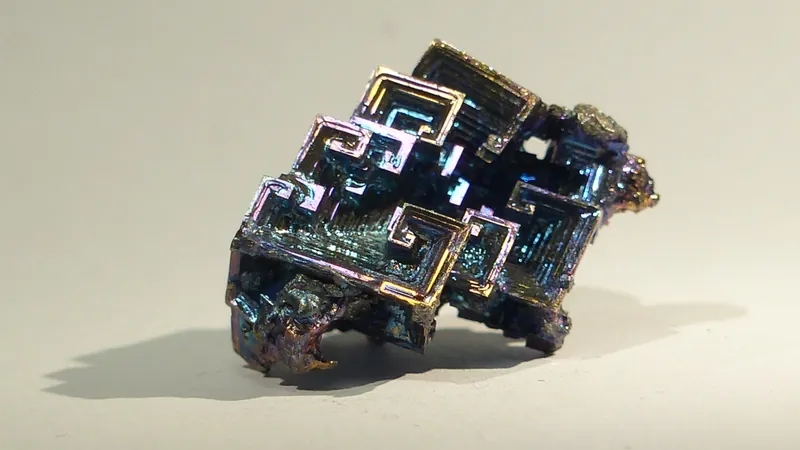
Unlocking the Future: How Bismuth Clusters are Revolutionizing Materials Science
2025-09-04
Author: William
In an exhilarating breakthrough for materials chemistry, Professor Stefanie Dehnen from the Karlsruhe Institute of Technology (KIT) is leading the BiCMat project, revealing the astonishing potential of bismuth cluster compounds.
The Untapped Potential of Bismuth
Despite being overshadowed by more commonly studied elements, bismuth is stepping into the spotlight as researchers explore its unique properties. This heavy, non-toxic metalloid presents exciting opportunities for cutting-edge materials development that could revolutionize technology.
BiCMat: An Ambitious Quest to Explore Bismuth
Under the initial guidance of an ERC Advanced Grant, the BiCMat initiative aims to not only discover and isolate novel bismuth clusters but also translate these findings into high-dimensional materials. Through innovative synthesis methods, Professor Dehnen's team is set to answer critical questions: Could bismuth compounds act as catalysts for small molecule activation? Or even serve as next-generation battery materials?
Why Bismuth Stands Apart
Bismuth is a rare gem in the periodic table, known for its remarkable semiconducting properties and unique atomic structure that differs significantly from typical metals. This non-toxic element is drawing attention not just for its safety—a striking contrast to the toxicity of its neighboring elements—but also for its promising applications in organometallic chemistry and even medical fields.
Advancing Chemistry: From Clusters to Complex Materials
The project’s cutting-edge approaches aim to connect bismuth clusters into innovative one-dimensional, two-dimensional, and three-dimensional structures. Surprising discoveries, such as a remarkable aromatic cluster formed solely from bismuth atoms, reveal that bismuth can exhibit metal-aromatic behaviors never observed before. These breakthroughs could significantly enrich our understanding of molecular structures and properties.
Harnessing Machine Learning in Chemistry
As BiCMat progresses, the integration of machine learning is becoming pivotal. While still in its early stages, the application of predictive analytics promises to streamline the synthesis process, allowing researchers to determine the most efficient reactions based on data-driven insights.
Real-World Impacts: From Catalysis to Energy Storage
The practical implications of bismuth clusters are vast, particularly in catalysis, where they show potential for facilitating reactions such as hydrogenation. Moreover, their unique properties could transform applications in photovoltaics and battery technology, paving the way for more sustainable and efficient energy solutions.
A Call for Collaboration
For this groundbreaking research to reach its full potential, collaboration is key. The team is seeking partners with expertise in device fabrication, particularly in developing printing techniques for these materials. By combining cluster chemistry with industrial expertise, the BiCMat project can more efficiently scale up innovations and create practical applications.
The future of bismuth in materials science isn’t just promising—it’s a frontier waiting to be explored! Join the journey into the world of untouched possibilities for materials that could change our lives.









 Brasil (PT)
Brasil (PT)
 Canada (EN)
Canada (EN)
 Chile (ES)
Chile (ES)
 Česko (CS)
Česko (CS)
 대한민국 (KO)
대한민국 (KO)
 España (ES)
España (ES)
 France (FR)
France (FR)
 Hong Kong (EN)
Hong Kong (EN)
 Italia (IT)
Italia (IT)
 日本 (JA)
日本 (JA)
 Magyarország (HU)
Magyarország (HU)
 Norge (NO)
Norge (NO)
 Polska (PL)
Polska (PL)
 Schweiz (DE)
Schweiz (DE)
 Singapore (EN)
Singapore (EN)
 Sverige (SV)
Sverige (SV)
 Suomi (FI)
Suomi (FI)
 Türkiye (TR)
Türkiye (TR)
 الإمارات العربية المتحدة (AR)
الإمارات العربية المتحدة (AR)